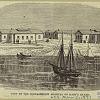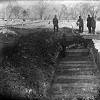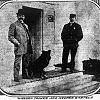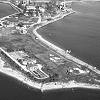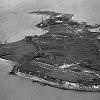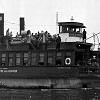Isle of the Dead |
|
A PHP Error was encountered
Severity: Notice
Message: Only variables should be passed by reference
Filename: pages/site.php
Line Number: 13

- Genre:Cemetery / Crypt, Juvenile Detention Center, Psychiatric Hospital
- Comments: 348
- Built:1869
- Opened:N/A
- Age:156 years
- Closed:1976
- Demo / Renovated:N/A
- Decaying for:49 years
- Last Known Status:Abandoned (Residential programs were shuttered in 1976, city burials still take place)

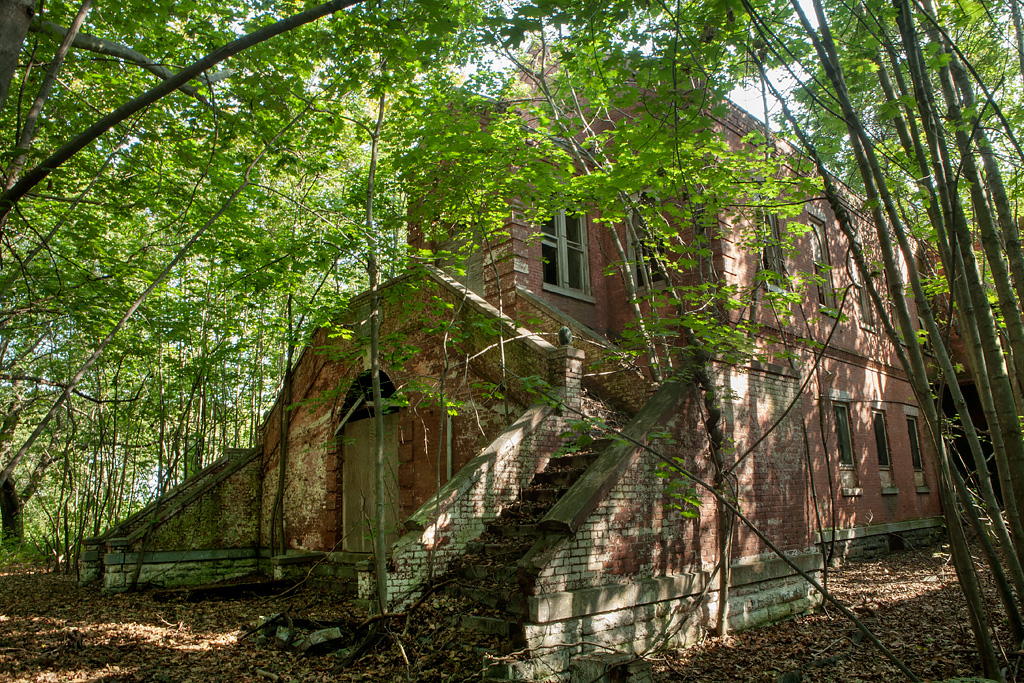
Photo © 2006 Tom Kirsch, opacity.us
Hart Island History
Hart Island was once private land owned by Thomas Pell when he purchased it from the area's Native Americans in 1654, and a barracks for Union Soldiers during the Civil War, but like many of the island surrounding New York City, it had eventually become a place for the "socially undesirable." Once the federal government had no use for the island, it was purchased by New York City in 1868 for $75,000. A year later, an extension of the House of Refuge (a prison on Roosevelt Island) was established on Hart, which was a work house for delinquent boys. The first civilian burial also took place that year, starting the precedent of using the land as a potter's field. In 1870, structures built on the southern tip of island were used to treat victims of the yellow fever epidemic. A branch of the New York City Asylum for the Insane established a hospital for women on the island in 1885.
In 1904, a large institution called the Reformatory for Misdemeanants was built in the center of the island, accommodating about 2,000 boys toiling in the workhouses or out in the field, burying the dead. Buildings on Hart would continue to be erected until as late as 1931, when the last structure, the chapel, was constructed. The reformatory became a small city unto itself, with about 24 buildings connected with paved streets. It wasn't an easy place to live as a City Council investigation revealed; the boys would be subject to various tortures, such as kneeling for hours in a room called "the cooler," being ordered to beat each other with clubs, and having to perform "stand up," which consisted of standing in a straight line for half the night during a period of a few weeks. The island was described as a chaotic place, as the buildings would house inmates mixed with other people having mental illness, infectious diseases, substance abuse and the homeless. The boys would often become sick from sharing towels, razors and soap with residents infected with tuberculosis and other contagions.
Hart island was almost home to what would have been a very odd sight among the barred windows of the reformatory buildings: an amusement park. Solomon Riley, a black man who owned four acres of land on the southern tip, began building a park known as "Negro Coney Island" in 1925. He became wealthy by using his white wife's name to purchase property in predominantly-white areas in Harlem and renting the apartments to blacks, and wanted to open an amusement park for his new tenants, who were barred from the "whites only" parks in Rye and Dobbs Ferry. With a dance hall, eight boarding houses, a 200-ft boardwalk and a bathing pavilion already constructed, reformatory officials cringed at the absurdity of this park, surrounded by graves and miscreants. The city condemned the property to prevent the completion of the park, and Mr. Riley eventually sold the land to the city for $144,000.
Escapes were not uncommon, even without the amusement park to aid in sumggling. Prisoners have managed to leave the island by swimming, climbing onto waiting motorboats, or even simply running over the ice in the winter to City Island. A prisoner named Joseph "The Eel" Farrell bragged that he swam to Long Island in 1919, and escaped once again to the Bronx in 1921.
In 1928, Hart Island was primarily an overflow facility for prison overcrowding, and during World War II it was used as a disciplinary camp for over 2,000 Navy and Coast Guard troops. It would also serve as a prison for German soldiers arrested off the coast of Long Island. During the next few decades, the facilities on the island would focus on experimental pilot programs such as a tubercularium, the "six point" program for alcoholics (1952), and the Phoenix House for substance abuse (1967). In 1955 a Nike missile launch site was constructed on the island to protect the city during the Cold War era (more history on the Nike site here). A multitude of graves were destroyed when the missile elevators were built, but no one know who was in them. When Ebbets Field was torn down in 1960, the bleachers were donated to Hart Island, where they still remain, bolted to railroad ties from the dismantled Third Avenue Elevated Train.
The aforementioned Phoenix House was a product of a three million dollar renovation of the work houses, funded by NYC in 1967. It proved to be a successful model program where former addicts could help others perform disciplined abstinence, but did not last long on the island itself. A last attempt to use the island for the living was made by the Department of Corrections in 1982, in an effort to discipline minor offenders with short-term "quality of life" sentences. Trailers enclosed with razor wire would serve as confinement for graffiti vandals, turnstile jumpers, small time drug dealers and the like. It failed due to the lack of convictions in municipal courts, and the area is now used for accommodating the burial detail and correction officers.
The primary focus of Hart Island has been being a potter's field for the city from 1869 to the present day. The first burial was that of Louisa Van Slyke, a 24-year old orphan who died at Charity Hospital and with no one to claim her body. The island has since become the largest tax-funded cemetery in the world, with over 1 million bodies interred over 101 acres. Along with the unknown and indigent, the people buried here also may not have been able to afford a private funeral. A burial on Hart Island is vaguely defined as a "City Burial" on official paperwork. Unknown adults are buried in single plots, and are the most often disinterred and identified using medical data from surviving relatives. Identified adults are in 3-sectioned trenches of 48 bodies for easier disinterment; their caskets are stacked three high and two across. Children (mostly stillborn / infants) are buried in trenches of 1,000 bodies, as they are very rarely disinterred. Their caskets stack five high and usually twenty across, depending on the size. The first child to die of AIDS in NYC was buried in isolation on the southern tip of the island, and was given a special grave stone marked "SC-B1, 1985" (SC = special child, B1 = Baby 1). Amputated body parts are also buried on the island, in boxes labeled "limbs."
The island takes in about 1,500 bodies a year, and there is a constant struggle to find more burial space. In the past, the trenches were re-used after 25-50 years of decomposition; workers would dig up the decayed remains and toss aside any remaining bones to make room for the pine boxes. This practice has ended, but now there's less room, and the abandoned but historic buildings are being torn down to make more space for new burials. The grisly work of the trenching is performed by Rikers Island inmates, given a 50-cent an hour wage, and under close supervision by DOC officers. A single ferry operated by the NYC Department of Transportation services the island, departing from Fordham St. on City Island where a morgue truck carries the bodies to be buried in simple pine boxes.
Accessing records is an arduous and sometimes impossible task. Trench numbers were bizarrely duplicated and changed over the years, making identifying the plots difficult. Records were stored on hand-written ledgers, many of which had been destroyed in a 1977 fire where about 25,000 people were forgotten. Even after the fire, records were still kept on one hand-written ledger on the island, until recently. The paperwork is often illegible or improperly photocopied, which obliterates access to thousands of burial records. Melinda Hunt, an artist who started photographing the toppled grave markers in the early 1990s, started amassing a database that is considered more complete than official records, made through a Freedom of Information Act request. She has also published a book called Hart Island and produced a film called Hart Island: An American Cemetery; these and the database all can be found at the Hart Island Project website.
Access to the island is extremely restricted; relatives can visit but must be accompanied by a corrections officer, and are very restricted to where they are able to go. Cell phones, cameras and the press are banned from the island. Getting caught on Hart Island is considered trespassing on prison property, and carries a sentence of 2 years in prison. Efforts are being made to transfer the property from the Department of Corrections to the Parks Department, and possibly loosen some of the visitor restrictions. In 2018, erosion of the shoreline has exposed the bones of the dead, and NYC has invested $13 million to back-fill and reinforce these areas.
The island is home to an estimated 900,000 bodies as of 2012. For more information be sure to check out the New York Correction History Society, and of course, The Hart Island Project.

